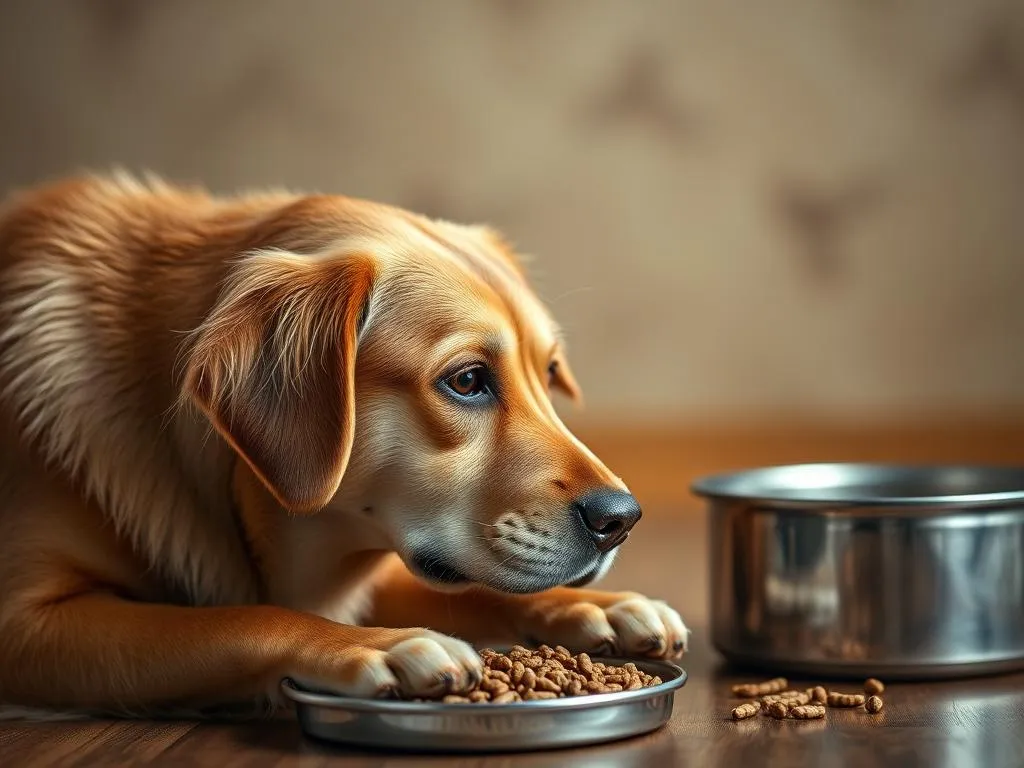
Introduction
As a pet owner, understanding the significance of dog nutrition is crucial for the health and well-being of your furry friend. Proper nutrition not only supports their physical health but also influences their behavior, energy levels, and overall quality of life. One vital aspect of dog nutrition that often goes overlooked is the shelf life of dog food. Knowing how long will dog food last can help you make informed decisions about your pet’s diet and prevent any health issues arising from spoiled food.
In this article, we will explore the different types of dog food, the factors that affect their shelf life, and practical tips for storage. By the end, you will have a comprehensive understanding of dog nutrition and how to manage your pet’s food supply safely and effectively.
Understanding Dog Food Types
Dry Dog Food (Kibble)
Dry dog food, commonly referred to as kibble, is one of the most popular choices among pet owners. It is generally composed of a mix of grains, proteins, fats, vitamins, and minerals. The nutritional value of kibble can vary significantly between brands, so it’s essential to choose a high-quality product that meets your dog’s specific dietary needs.
Common Preservatives Used: Kibble often contains preservatives to prolong its shelf life. These can include natural options like mixed tocopherols (vitamin E) and synthetic compounds like BHA and BHT. While preservatives help maintain freshness, it’s essential to check the ingredient list for quality.
Wet Dog Food (Canned)
Wet dog food comes in cans or pouches and offers several advantages, such as higher moisture content, which can help keep your dog hydrated. It often contains more protein and fewer fillers compared to dry food. However, it can be more expensive and has a shorter shelf life once opened.
Nutritional Differences Compared to Dry Food: Wet food is typically richer in protein and fat, making it an excellent choice for dogs with higher energy needs. However, it is essential to balance it with dry food to ensure your dog receives a well-rounded diet.
Raw Dog Food
The raw dog food diet, sometimes referred to as a “BARF” (Biologically Appropriate Raw Food) diet, consists of uncooked meat, bones, vegetables, and fruits. Advocates claim that this diet can lead to healthier skin, shinier coats, and increased energy levels.
Potential Risks and Challenges: While there are benefits, there are also risks, such as bacterial contamination (e.g., Salmonella or E. coli) and nutritional imbalances if not properly formulated.
Homemade Dog Food
Preparing homemade dog food can be a great way to ensure your dog gets wholesome ingredients. However, it requires careful planning to meet all nutritional needs.
Safety and Storage Tips: When making homemade dog food, it’s crucial to store it safely. Use airtight containers and keep food refrigerated or frozen, depending on how soon you plan to use it.
Factors Affecting Dog Food Shelf Life
Packaging
The type of packaging can significantly influence the shelf life of dog food. Bags, cans, and vacuum-sealed containers all have different longevity characteristics.
Impact of Vacuum Sealing and Airtight Containers: Vacuum-sealed packages and airtight containers can extend the shelf life by preventing exposure to air and moisture, which can lead to spoilage.
Storage Conditions
The conditions under which dog food is stored also play a vital role in its longevity.
Ideal Temperature and Humidity Levels for Storage: Dog food should be stored in a cool, dry place, ideally at temperatures between 50°F to 70°F (10°C to 21°C). High humidity can cause mold growth and spoilage.
Importance of Keeping Food Away from Direct Sunlight: Exposure to sunlight can degrade the quality of the food and reduce its shelf life. Always store dog food in a shaded area.
Ingredients
The ingredients in dog food, especially preservatives, can affect how long it lasts.
Role of Preservatives and Their Effect on Shelf Life: Natural preservatives tend to be less effective than synthetic alternatives, but they are often a healthier choice. Awareness of the type of preservatives used can guide your purchasing decisions.
Natural vs. Artificial Ingredients: Generally, dog foods with natural ingredients have a shorter shelf life than those with artificial additives. However, the nutritional quality of natural ingredients is usually superior.
How Long Will Dog Food Last?
Unopened Dog Food
Understanding the shelf life of unopened dog food is crucial for planning purchases.
General Shelf Life for Different Types of Dog Food:
– Dry Dog Food: Typically lasts 12 to 18 months.
– Wet Dog Food: Generally retains quality for 2 to 5 years.
– Raw Dog Food: Usually has a shelf life of 6 months to 1 year, depending on packaging.
Best By Dates vs. Expiration Dates: It’s important to note that “best by” dates indicate peak freshness, while expiration dates signify when the food should no longer be consumed.
Opened Dog Food
Once dog food is opened, its shelf life changes significantly.
Guidelines for How Long Opened Dry Dog Food Lasts: Opened dry dog food can last for about 6 weeks to 3 months if stored correctly.
Storage Tips for Opened Wet Dog Food: Once opened, wet dog food should be refrigerated and used within 3 to 5 days for optimal freshness.
Signs of Spoilage
Knowing the signs of spoilage can help you avoid feeding your dog bad food.
Visual and Sensory Signs to Watch For: Check for changes in color, texture, or smell. If the food has an off odor or unusual texture, it may be spoiled.
How to Safely Dispose of Spoiled Dog Food: Dispose of spoiled food in a sealed bag to prevent attracting pests or creating odors.
Best Practices for Dog Food Storage
Storing Dry Dog Food
Proper storage methods can significantly extend the life of dry dog food.
Recommended Containers and Methods: Use airtight containers or resealable bags to keep moisture and air out.
Tips for Maintaining Freshness: Always close the bag tightly after use and avoid transferring food back and forth to prevent exposure to air.
Storing Wet Dog Food
Wet dog food requires specific storage techniques.
Proper Refrigeration Techniques: After opening, transfer any unused wet food to an airtight container and refrigerate immediately.
How to Handle Leftover Canned Food: For leftover canned food, cover it with a lid or wrap it tightly with plastic wrap before refrigerating.
Storing Homemade and Raw Dog Food
Proper storage is critical for homemade and raw dog food.
Best Practices for Meal Prep and Storage: Prepare meals in batches and store them in portions. Use airtight containers for refrigerator storage and consider freezing larger quantities.
Importance of Freezer vs. Refrigerator Storage: Freezing is the best option for long-term storage, while refrigeration is suitable for short-term use.
Nutritional Needs of Dogs
Understanding Dog Dietary Requirements
A well-balanced diet is essential for your dog’s health.
Overview of Essential Nutrients: Dogs need a mix of proteins, fats, carbohydrates, vitamins, and minerals to thrive. Understanding these nutrients helps in making informed food choices.
Adjusting Diet Based on Life Stage
Dogs have different nutritional needs depending on their life stage.
Puppy, Adult, and Senior Dog Nutritional Needs: Puppies require more protein and fat for growth, adults need a balanced diet for maintenance, and seniors might benefit from lower calories and higher fiber.
Common Dietary Restrictions
Dogs may have specific dietary needs or restrictions.
Allergies and Intolerances: Common allergens include grains, chicken, and beef. If your dog shows signs of allergies, consult your veterinarian.
Special Diets: Some dogs may require special diets, such as grain-free or low-fat, based on their health needs.
Conclusion
Understanding dog nutrition and the factors that influence how long will dog food last is essential for every pet owner. By familiarizing yourself with different types of dog food, proper storage methods, and your dog’s nutritional needs, you can ensure your furry friend remains healthy and happy. Remember, responsible pet ownership includes being aware of what you feed your dog and how to store it safely.
FAQs
How can I tell if dog food is still good?
Check for signs of spoilage, such as an off smell, discoloration, or changes in texture. Always adhere to the best by or expiration dates.
Can I use expired dog food?
While it may not be harmful immediately after the expiration date, it’s best to avoid using expired dog food to ensure your pet’s health.
What is the best way to transition my dog to a new food?
Gradually mix the new food with the old food over a week, increasing the new food’s proportion to prevent digestive upset.
Should I mix wet and dry dog food?
Mixing wet and dry food can provide a balanced diet and increase palatability, but always ensure that the combined diet meets your dog’s nutritional needs.









